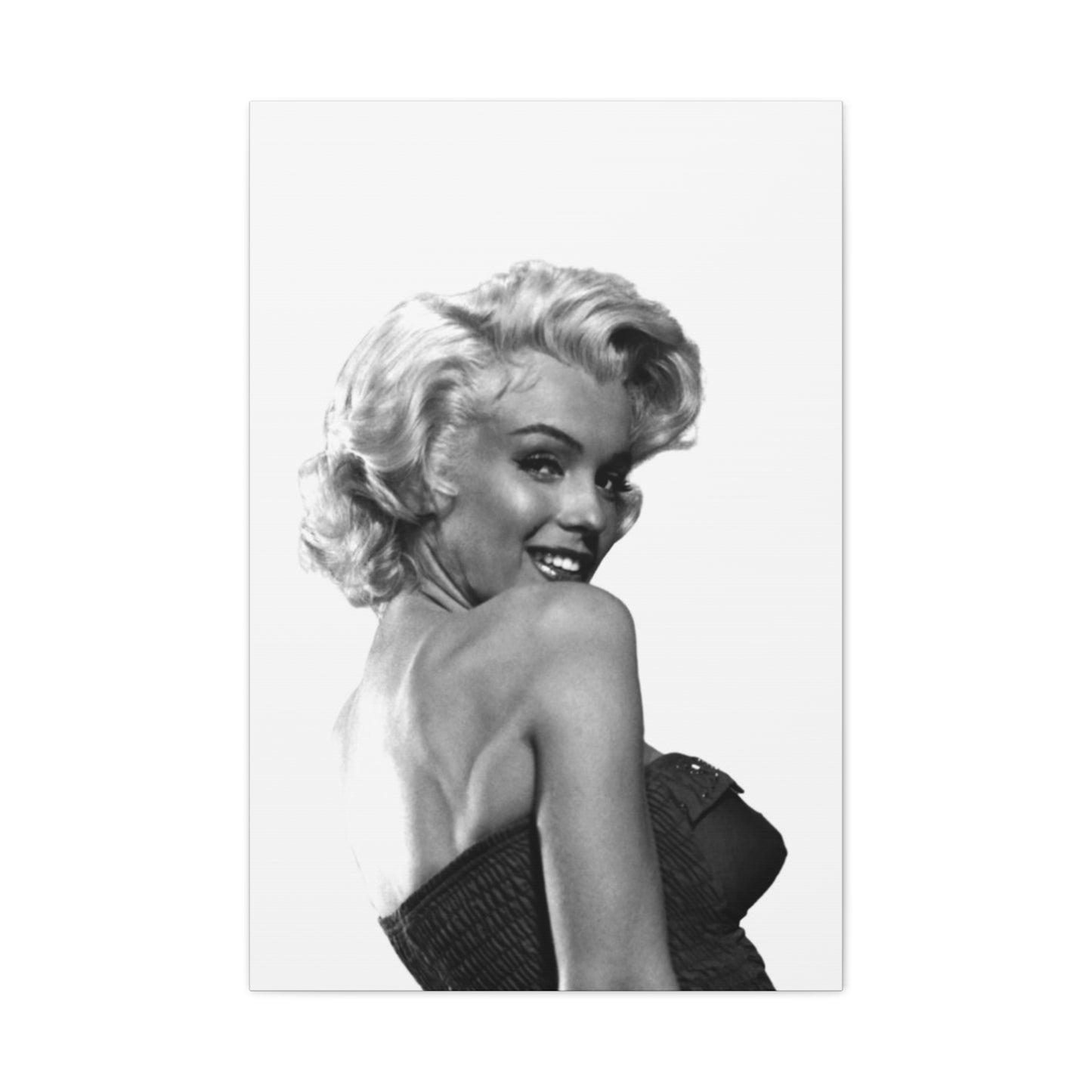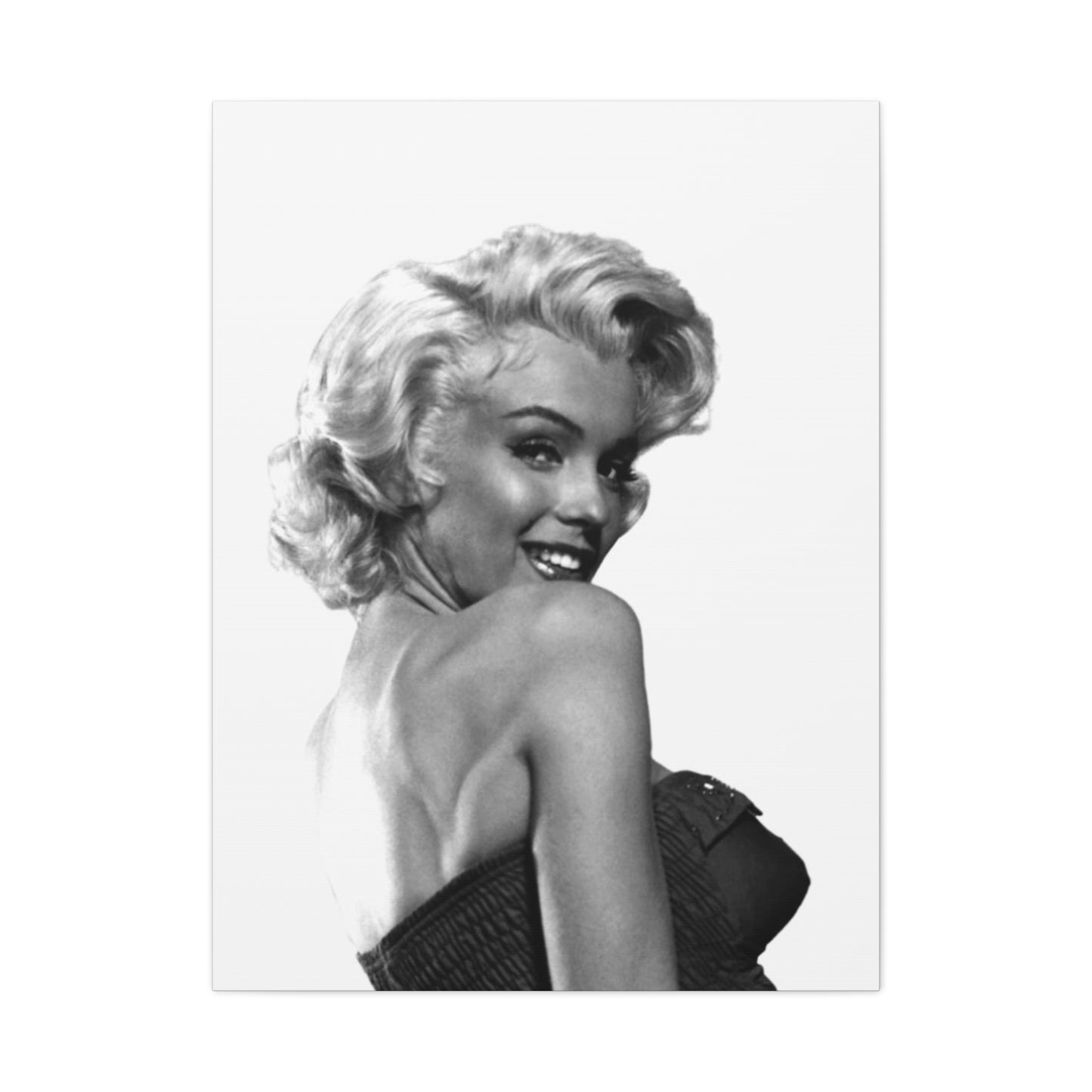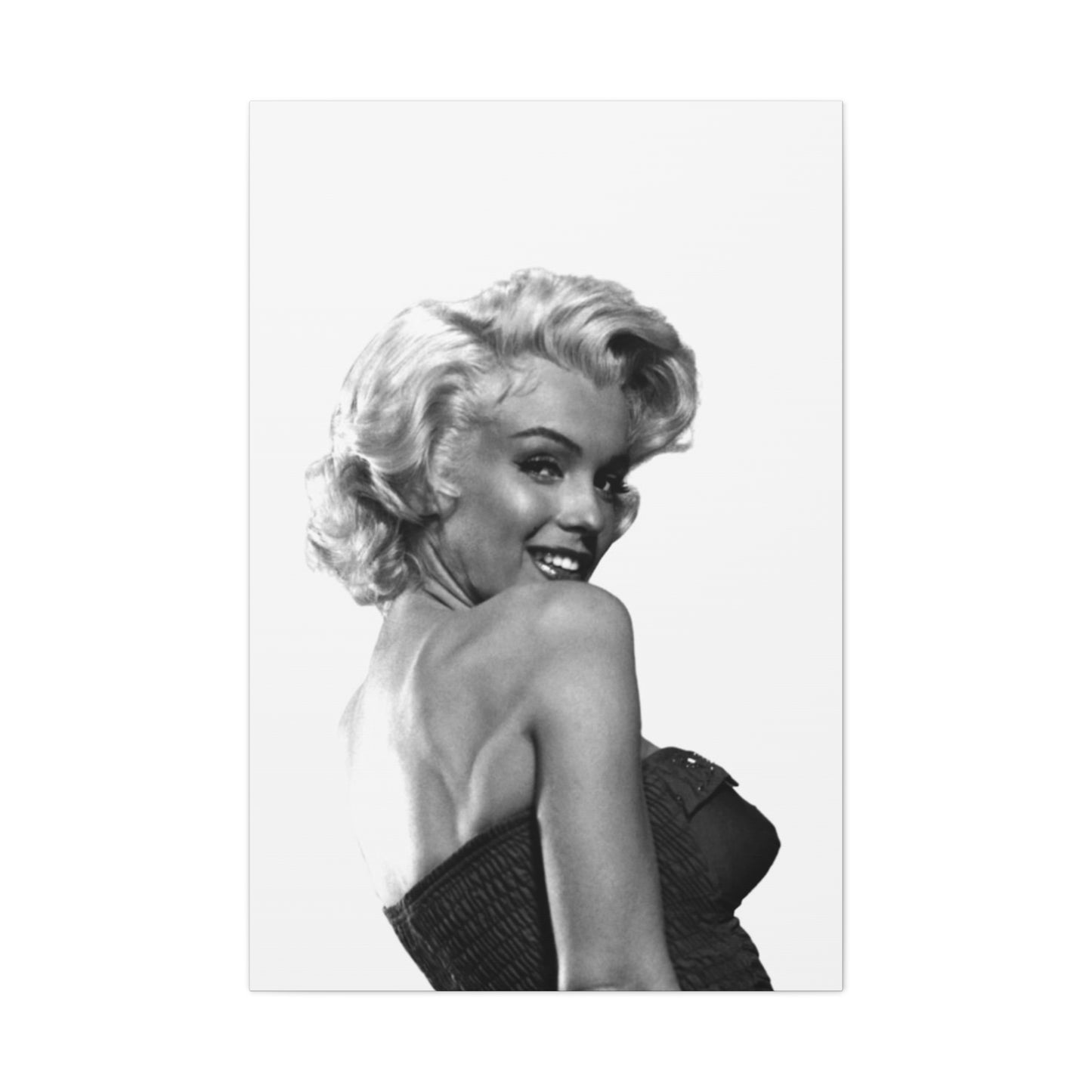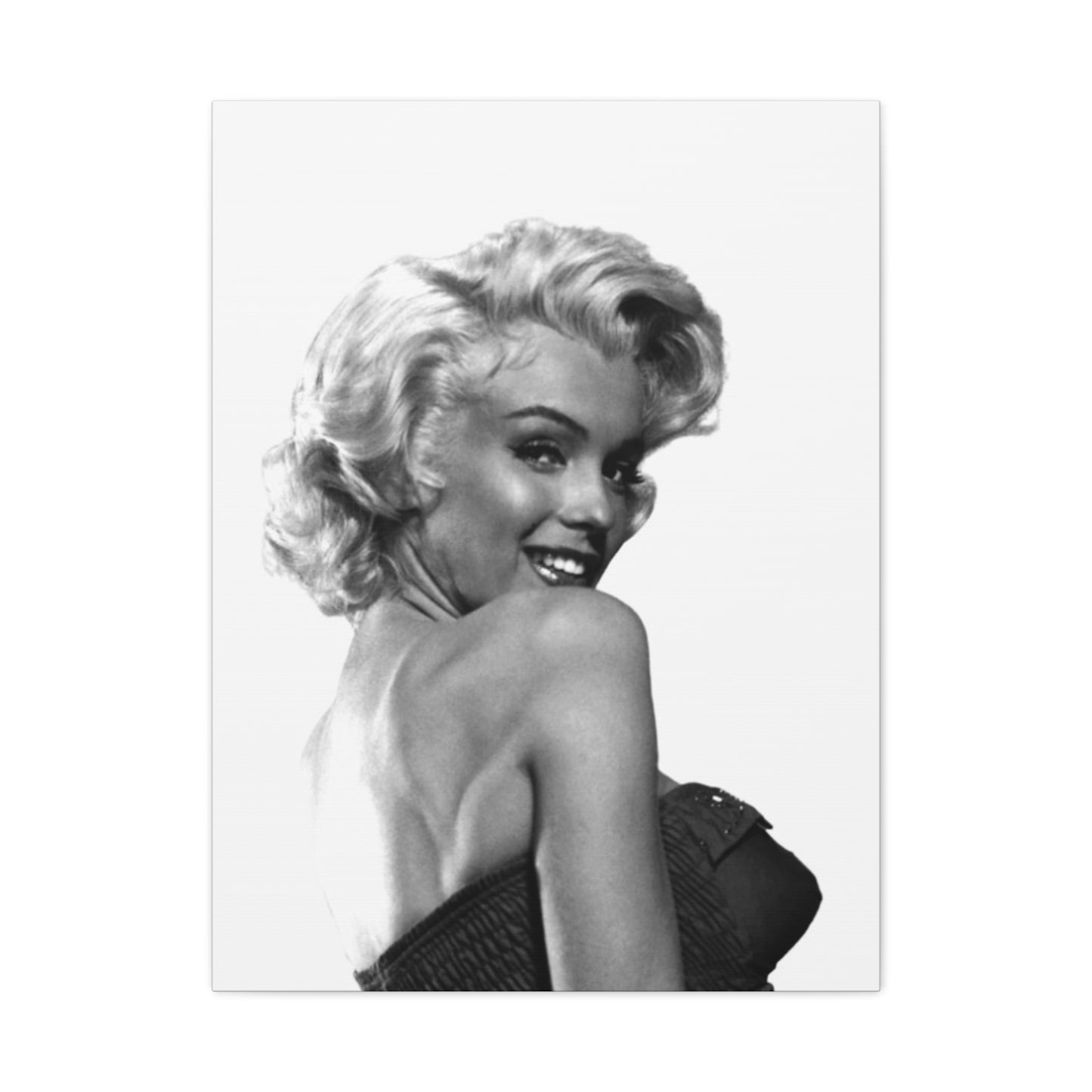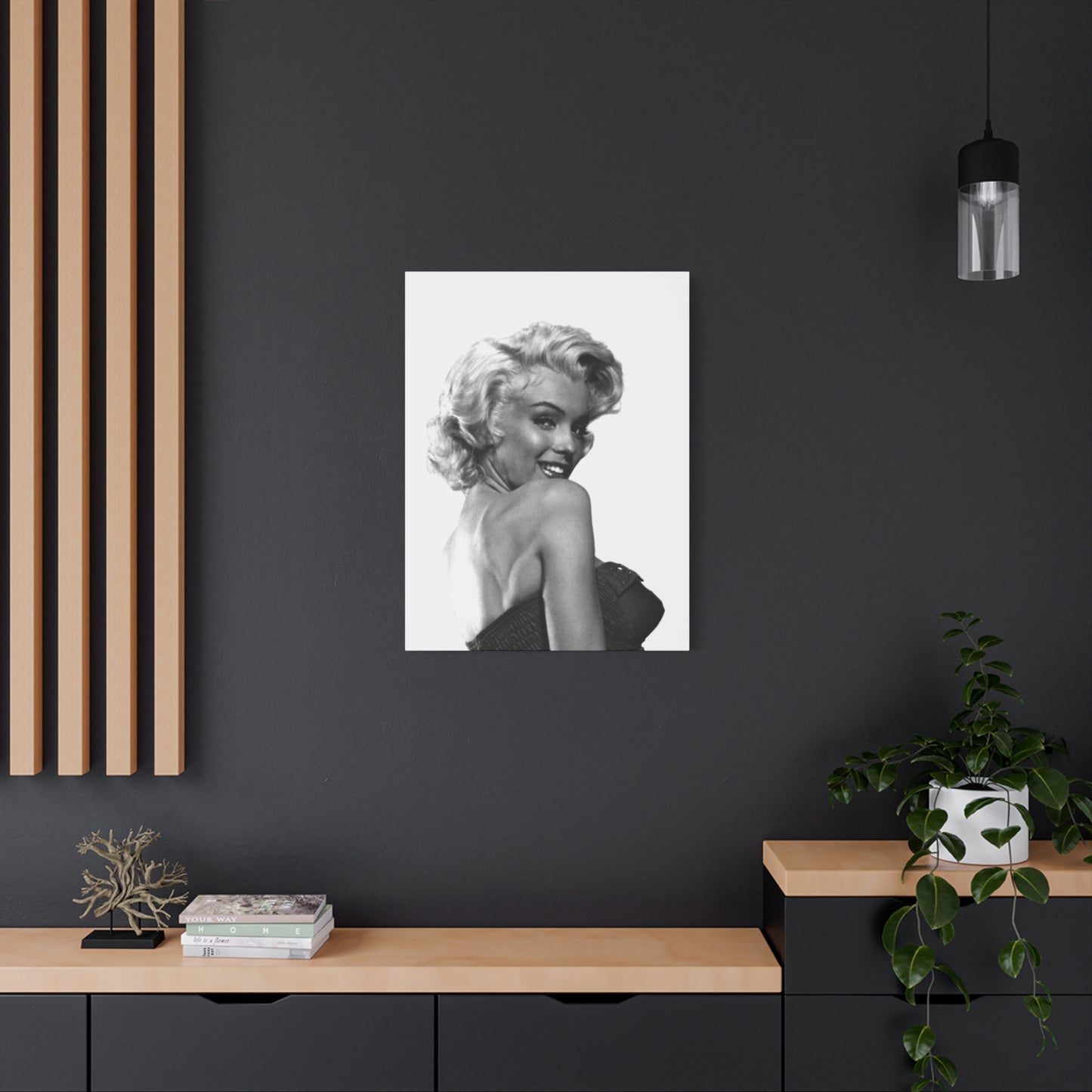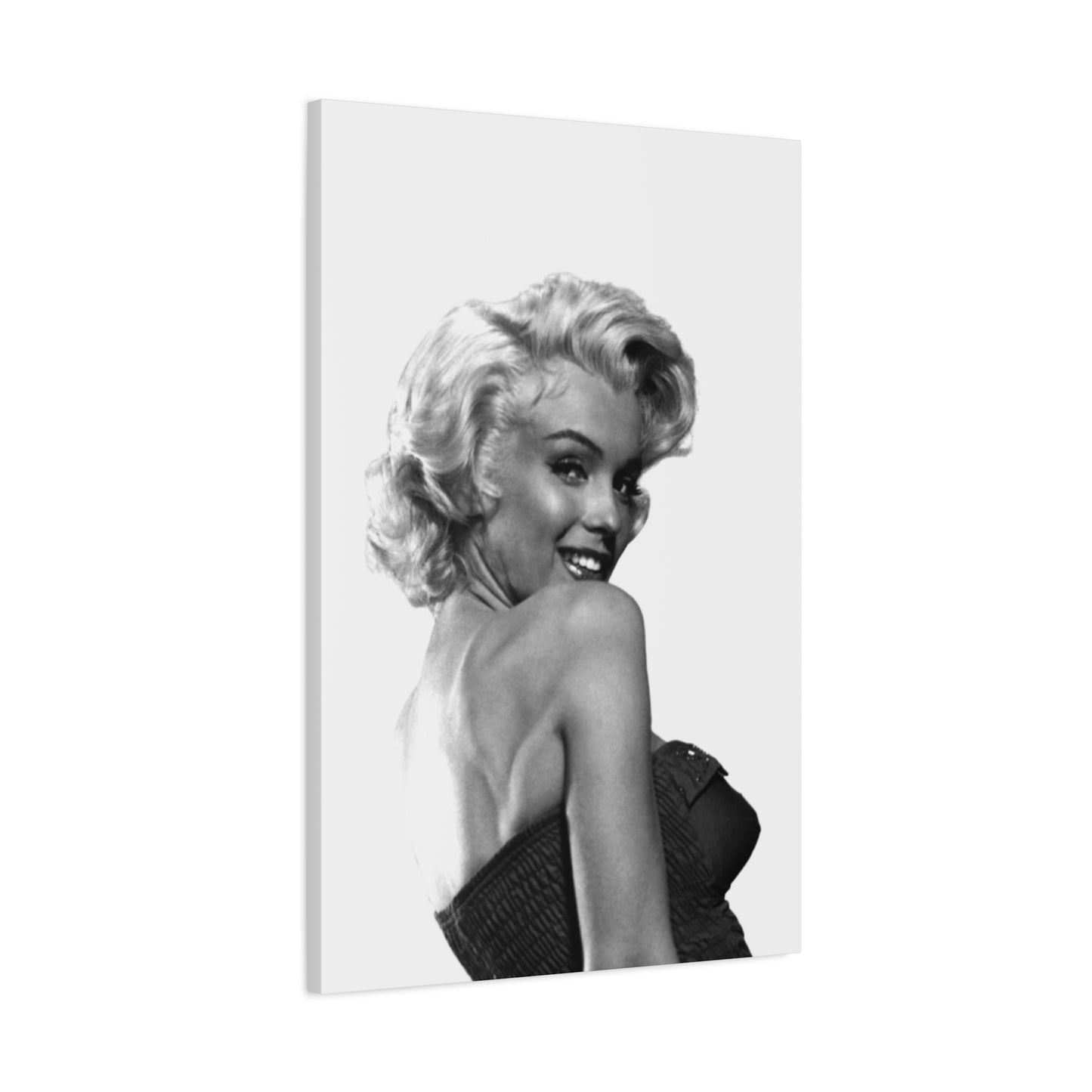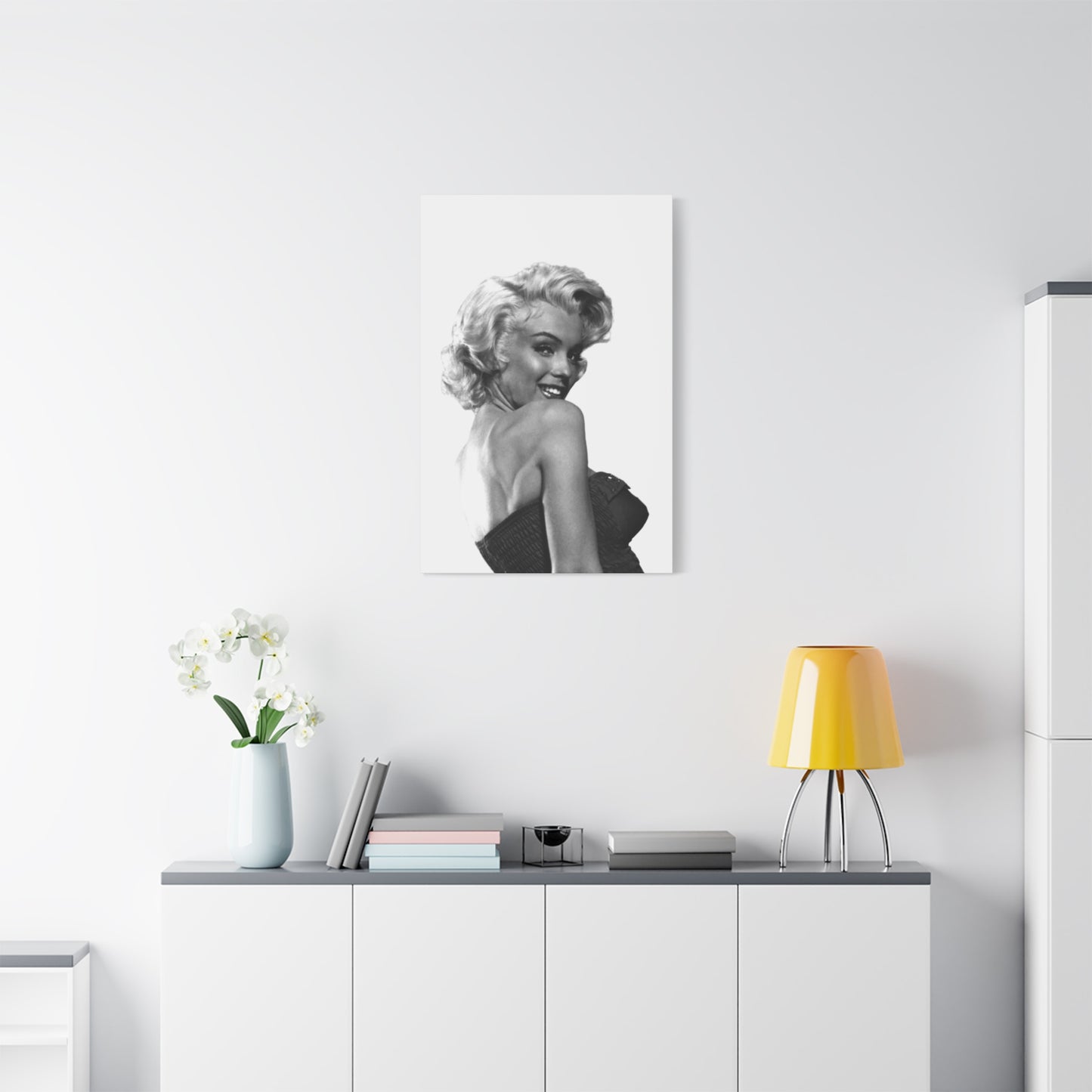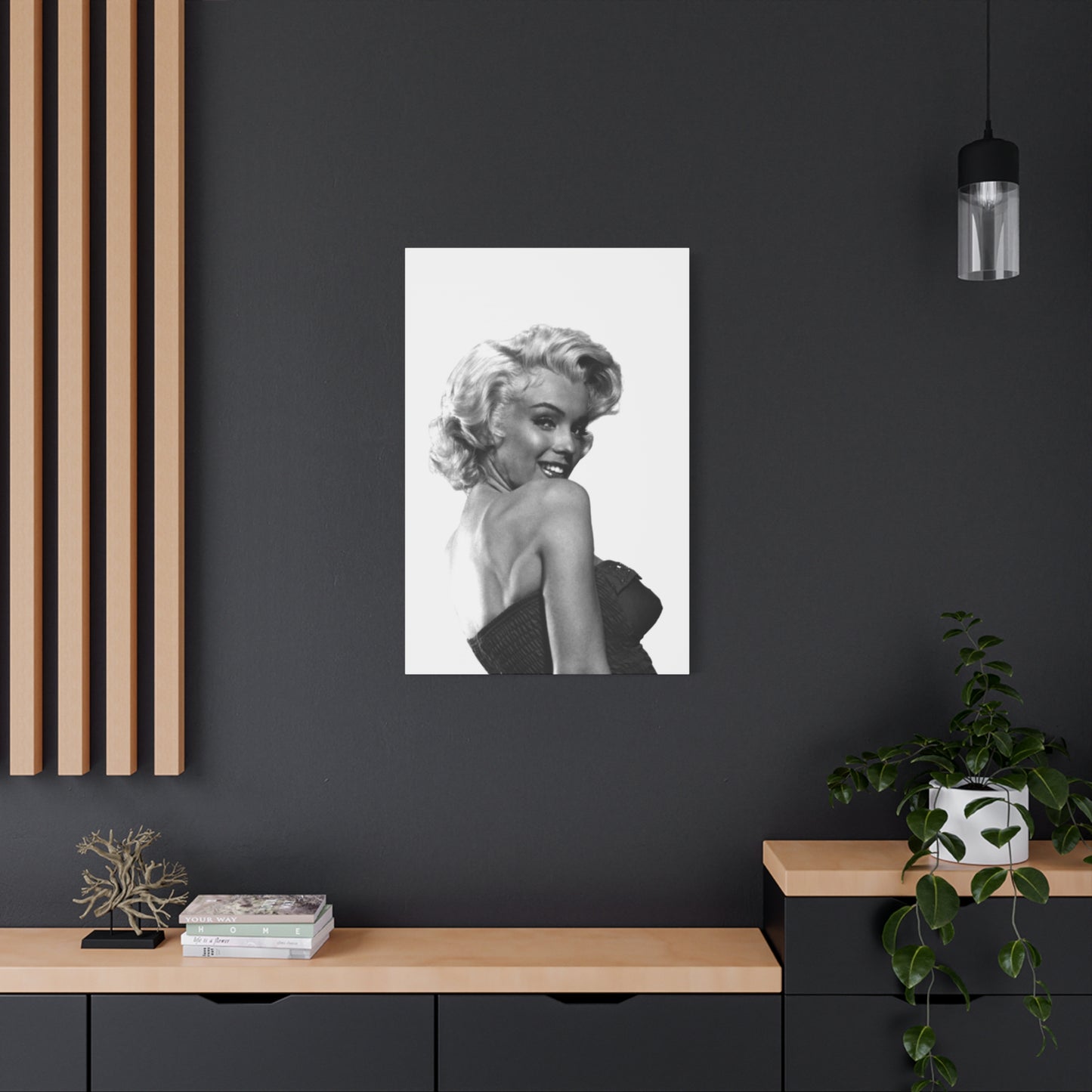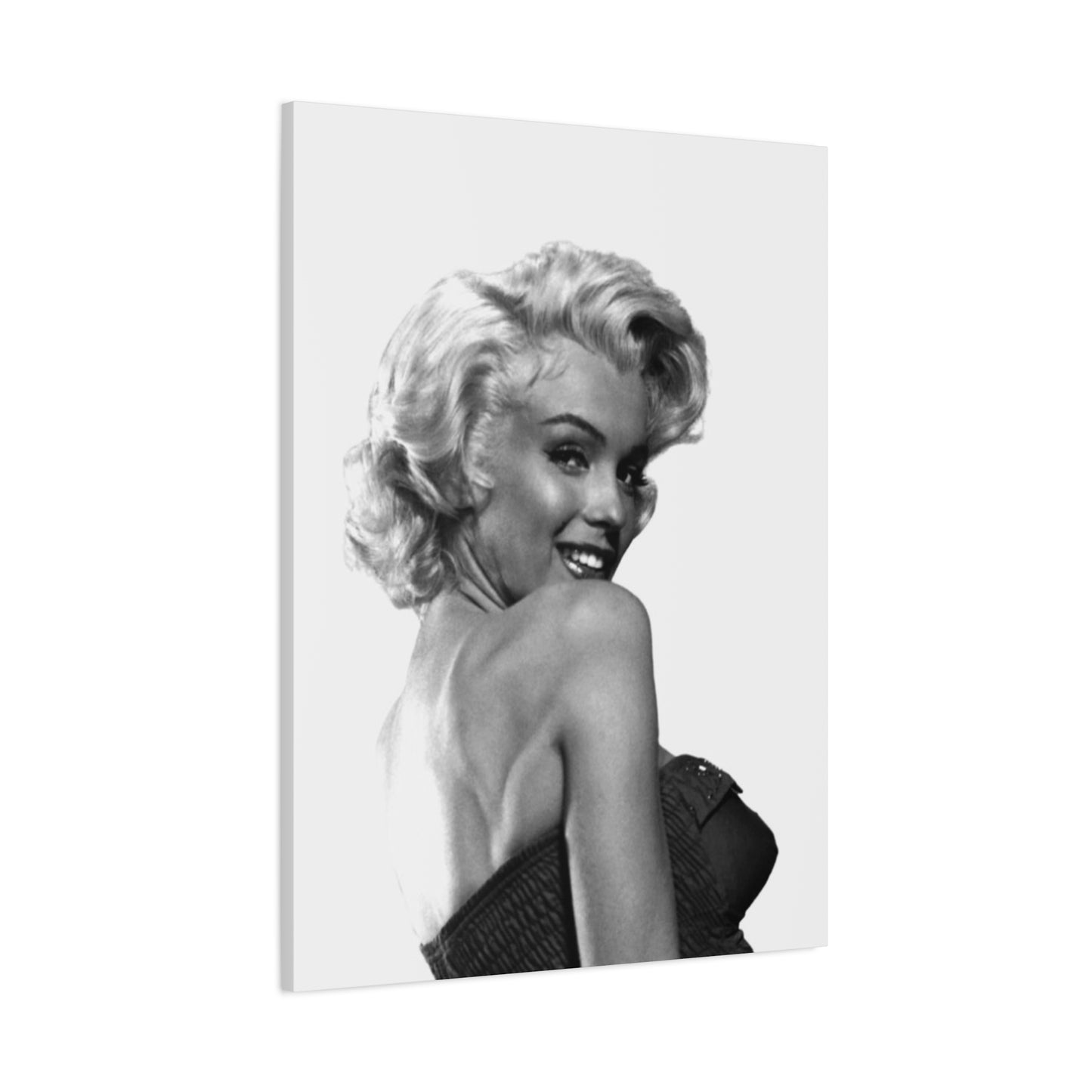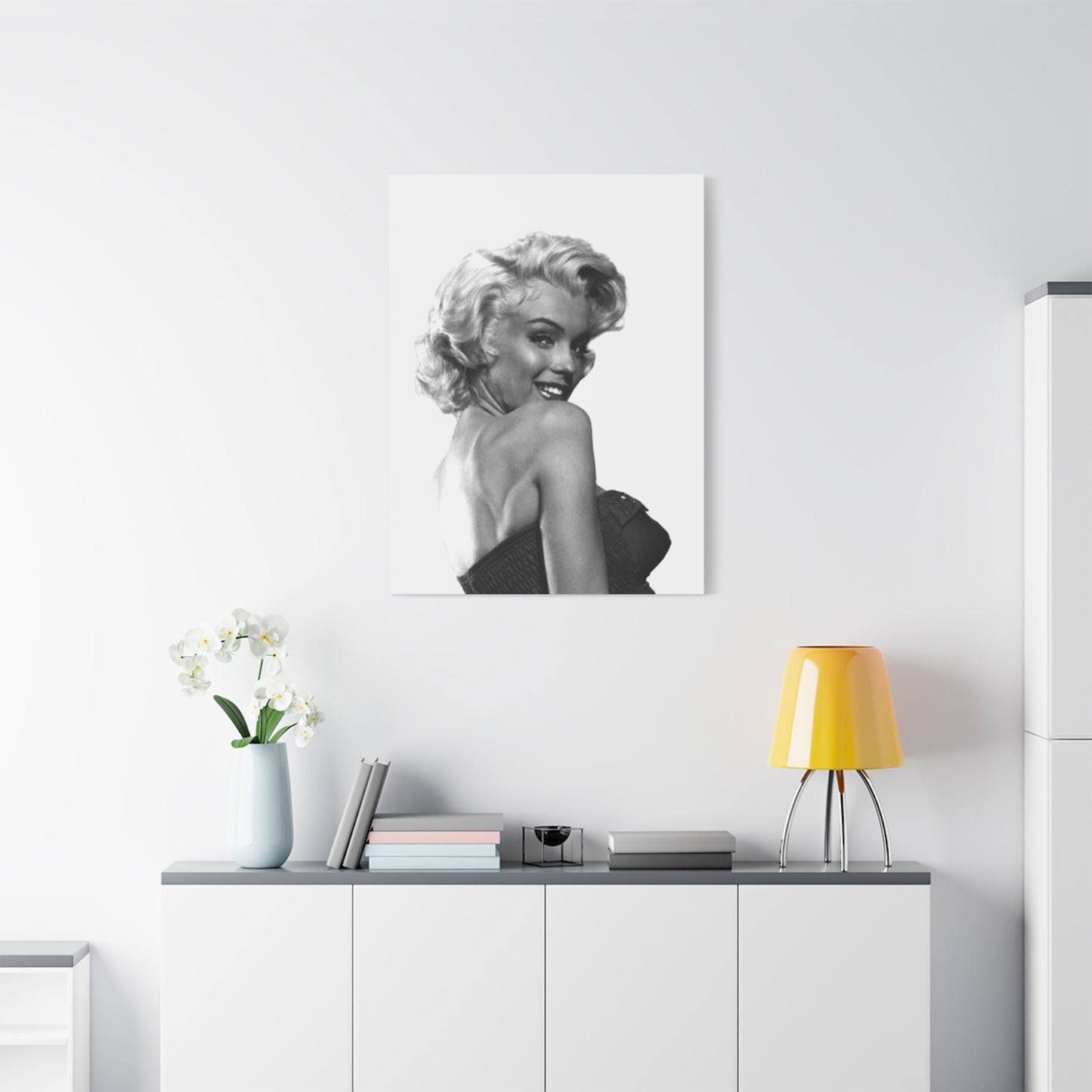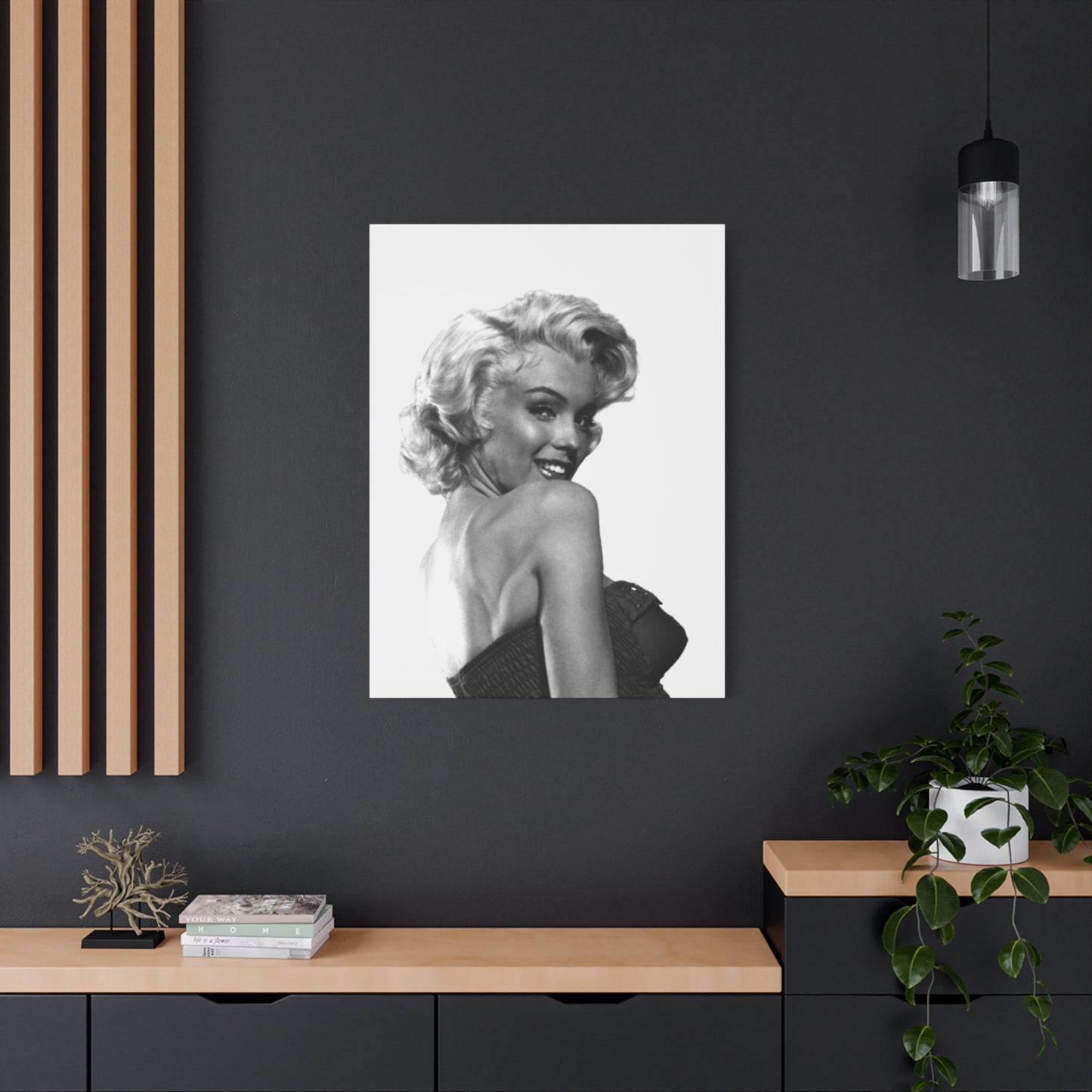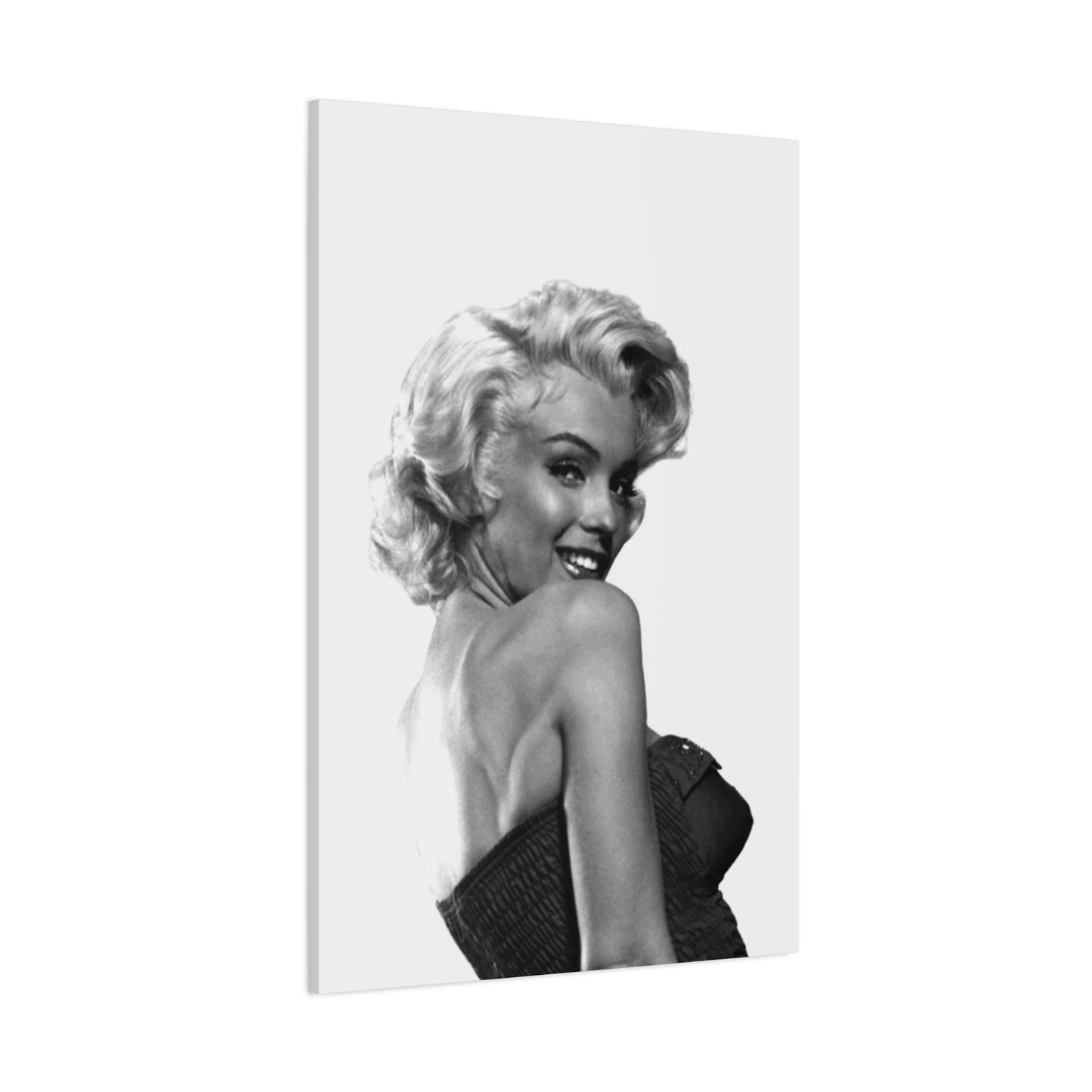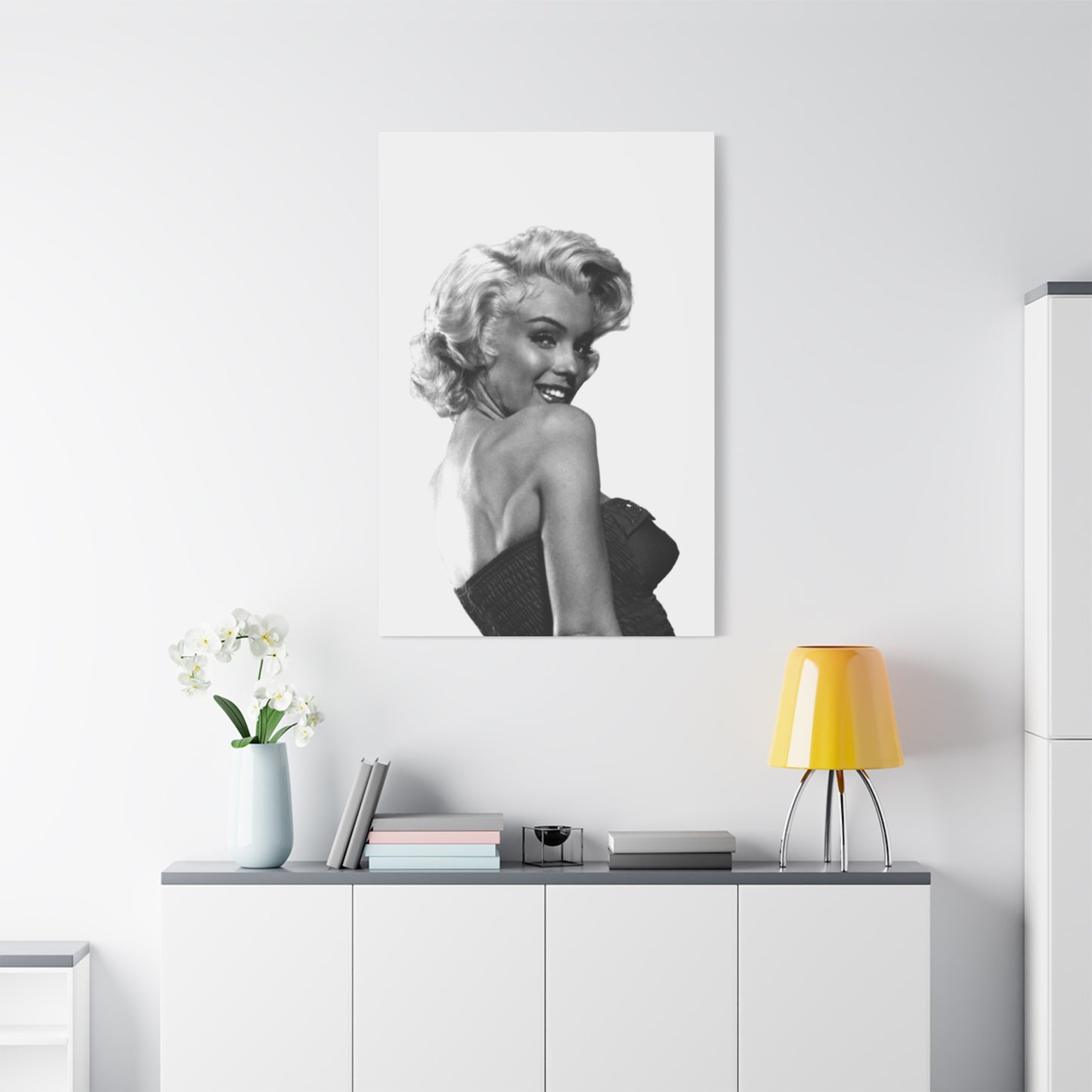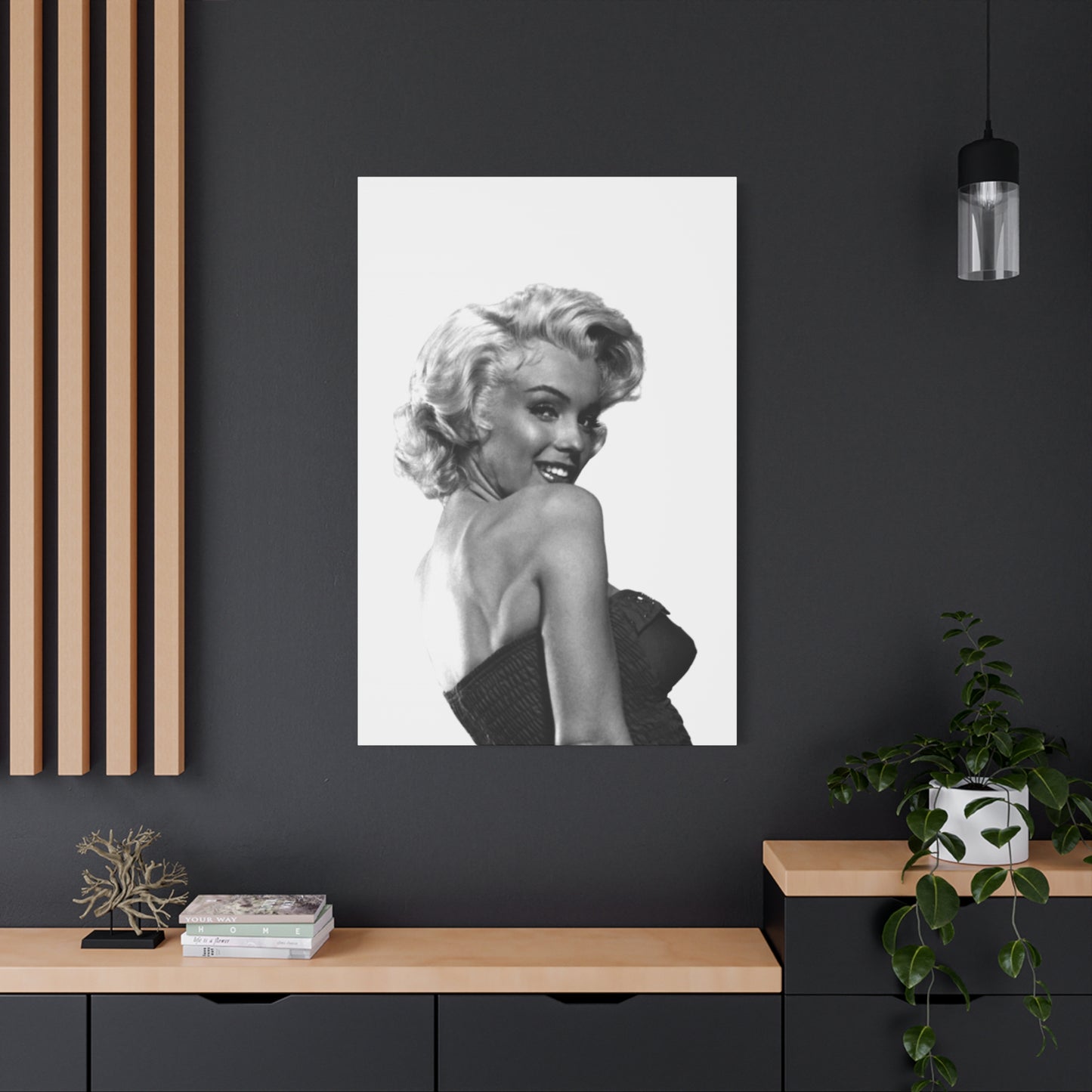Authentic Glamour: Candid Marilyn Monroe Wall Art for Vintage Lovers
The world of interior decoration has witnessed countless trends come and go, yet certain aesthetic choices maintain their appeal across generations. Among these enduring design elements, black and white photographic artwork featuring iconic cultural figures stands as a testament to sophisticated taste and artistic appreciation. The particular fascination with monochromatic representations of Hollywood's golden era personalities continues to captivate homeowners, interior designers, and art enthusiasts alike, offering a bridge between vintage glamour and contemporary minimalism.
When discussing visual art that captures both nostalgia and modernity, few subjects command attention quite like carefully curated photographic representations of legendary entertainment figures. These artistic pieces serve multiple purposes within residential and commercial spaces, functioning simultaneously as conversation starters, focal points, and expressions of personal taste. The absence of color in these compositions paradoxically adds depth and dimension, allowing viewers to focus on composition, lighting, emotion, and the intrinsic qualities that made certain personalities unforgettable.
The appeal of such artwork extends beyond mere decoration. These pieces represent cultural touchstones, connecting contemporary living spaces with significant moments in entertainment history. They embody an era when photography was transitioning from purely documentary purposes to recognized artistic medium, when studio portraiture reached its technical and creative zenith, and when public fascination with celebrity culture was blossoming into the phenomenon we recognize today.
The Enduring Appeal of Black and White Photography in Home Decoration
Black and white photography possesses an intrinsic quality that colored images cannot replicate. The absence of chromatic information forces viewers to engage with images differently, emphasizing form, texture, contrast, and emotional content over superficial visual appeal. This fundamental characteristic makes monochromatic photography particularly suited for interior design applications, where artwork must complement rather than compete with existing color schemes and furnishings.
The psychological impact of grayscale imagery differs substantially from color photography. Without the distraction of hues, viewers focus on the essential elements of composition—the interplay of light and shadow, the geometry of forms, the subtlety of tonal gradations. This concentrated visual experience creates a more meditative, contemplative interaction with the artwork, transforming casual observation into meaningful engagement.
From a practical design perspective, black and white artwork offers unparalleled versatility. These pieces integrate seamlessly into virtually any color palette, from stark minimalist whites to rich jewel tones, from earthy naturals to bold primary colors. This adaptability makes such artwork an intelligent investment for homeowners who anticipate evolving their interior design over time, as the pieces will remain relevant through multiple redecorating cycles.
The timeless quality of monochromatic photography also shields these pieces from the fashion cycles that affect colored artwork. While specific color combinations may fall in and out of favor, the classic appeal of black and white imagery remains constant. This permanence provides both aesthetic and financial value, as these pieces maintain their relevance and appeal indefinitely.
Significance of Hollywood Golden Era Portraiture
The mid-twentieth century represents a pinnacle in entertainment industry portraiture, when studio photography departments employed world-class talent to create images that would define how the public perceived their contracted performers. These weren't casual snapshots but carefully orchestrated artistic productions, involving expert lighting technicians, makeup artists, wardrobe specialists, and photographers who understood both technical excellence and emotional communication.
Studio portrait photographers of this era worked with large format cameras, requiring subjects to hold poses for extended periods while precise adjustments were made to lighting, composition, and expression. This methodical approach resulted in images of exceptional technical quality and emotional depth. The photographers functioned as directors, coaxing performances from their subjects that revealed vulnerability, strength, sensuality, or whatever quality the studio wished to project.
The cultural context surrounding these photographic sessions added layers of meaning to the resulting images. Entertainment figures of this period existed in a carefully controlled public relations ecosystem where their images were meticulously managed to construct specific public personas. Candid moments were rare and valuable, offering glimpses of authentic personality behind the manufactured glamour.
These historical photographs document not only individual personalities but also broader cultural attitudes toward beauty, femininity, masculinity, celebrity, and fame. They capture lighting techniques, posing conventions, makeup styles, and aesthetic preferences that defined an era. When displayed in contemporary settings, they create fascinating dialogues between past and present, inviting reflection on how cultural standards have evolved while certain qualities—confidence, vulnerability, charisma—remain universally appealing.
The archival nature of these images adds another dimension to their value. Many vintage photographs have been lost or deteriorated, making surviving images increasingly precious. High-quality reproductions preserve these cultural artifacts for new generations, ensuring that significant moments in entertainment and photographic history remain accessible and relevant.
Psychological Impact of Iconic Imagery in Living Spaces
Human beings form emotional connections with images that represent cultural touchstones from their own lives or from periods they find intriguing. Displaying artwork featuring recognizable figures creates immediate points of connection for visitors, facilitating conversation and creating welcoming atmospheres. These images serve as social lubricants, providing natural starting points for discussions about film history, cultural change, aesthetic preferences, and personal memories.
The specific choice of subject matter communicates values and interests to others. Selecting artwork featuring particular entertainment figures suggests appreciation for their artistic contributions, admiration for their life stories, or affinity for the era they represent. These selections become part of how individuals express identity through their environments, constructing spaces that reflect personal narratives and cultural allegiances.
Beyond social signaling, artwork affects mood and mental state. Images conveying confidence, beauty, and charisma can provide daily inspiration and emotional uplift. The aspirational quality of glamorous photography invites viewers to appreciate excellence and artistry, elevating everyday experiences through exposure to carefully crafted beauty.
The familiarity of iconic imagery provides psychological comfort. Recognizable faces and compositions create sense of continuity and stability within living spaces. This familiarity doesn't breed contempt but rather generates reassurance, particularly valuable in contemporary life characterized by rapid change and uncertainty.
Research in environmental psychology demonstrates that personalized spaces supporting individual identity and values contribute to psychological wellbeing. Artwork selections represent personal choices that transform generic spaces into meaningful environments. When individuals surround themselves with images that resonate personally, they create sanctuaries reflecting their authentic selves, supporting mental health and life satisfaction.
Considerations for Canvas Print Production Quality
The transformation of photographic images into canvas prints involves multiple technical processes, each affecting final quality. Understanding these factors helps consumers make informed decisions when selecting artwork for their spaces. The journey from original photograph to finished canvas print involves image selection, digital processing, printing technology, canvas material, stretching techniques, and finishing treatments.
Source image quality fundamentally determines final print quality. High-resolution scans of original photographs or negatives provide superior detail and tonal range compared to images derived from lower-quality sources. Professional art reproduction specialists work with archival materials when available, ensuring the finest possible starting point for reproduction processes.
Digital processing bridges the gap between vintage photographs and contemporary printing technologies. Skilled technicians restore damaged areas, adjust contrast and tonality, remove imperfections, and optimize images for specific printing methods. This intervention requires balancing historical authenticity with contemporary aesthetic expectations, preserving the character of vintage images while ensuring they appear their best when reproduced at large scales.
Printing technology significantly impacts final results. Giclée printing, utilizing high-end inkjet printers with extended color gamuts and archival-quality inks, represents the gold standard for fine art reproduction. These systems produce images with exceptional detail, smooth tonal transitions, and longevity measured in decades when properly displayed. Less expensive printing methods may initially appear satisfactory but often reveal limitations in detail resolution and color accuracy upon closer inspection.
Canvas material quality affects both appearance and durability. Professional-grade canvas features tight, uniform weaves that accept ink evenly without absorbing excessively. The weight and texture of canvas influence how images appear, with heavier canvases providing more substantial feel and finer textures preserving greater detail. Cotton and polyester canvases each offer distinct characteristics, with cotton generally preferred for fine art applications due to its archival properties and traditional appeal.
Stretching methodology impacts final presentation. Gallery-wrapped canvases, where the image continues around the edges of the stretcher frame, create contemporary, frameless presentations that work well in modern settings. Traditional stretching, where canvas edges are stapled to the back of frames, requires separate framing but allows for image replacement and offers certain aesthetic advantages in formal settings.
Protective coatings applied after printing serve multiple purposes. UV-resistant treatments slow fading from light exposure, moisture barriers protect against humidity, and scratch-resistant finishes increase durability. These treatments add minimal cost but substantially extend the life of canvas prints, making them worthwhile investments for pieces intended as long-term design elements.
Optimal Placement Strategies for Maximum Visual Impact
Strategic artwork placement transforms individual pieces into integral design elements. The relationship between artwork and its surrounding environment determines whether pieces fulfill their potential or become overlooked background elements. Multiple factors influence optimal placement decisions, including viewing distance, lighting conditions, wall color, surrounding furnishings, and architectural features.
The height at which artwork hangs significantly affects viewer engagement. Standard guidelines suggest positioning pieces so their centers align approximately at eye level, typically around sixty inches from the floor. However, this rule requires adjustment based on ceiling height, room function, and whether pieces will be viewed primarily while standing or seated. Artwork in dining rooms should account for seated viewing positions, while pieces in hallways accommodate standing viewers.
Viewing distance determines appropriate image size. Large-scale canvases require adequate space for viewers to step back and appreciate complete compositions. Placing oversized artwork in confined spaces creates overwhelming effects, while positioning modestly-sized pieces on expansive walls renders them insignificant. The relationship between image size and wall dimensions should create visual balance, with artwork commanding attention without dominating inappropriately.
Lighting dramatically influences how artwork appears. Natural light provides excellent color rendering but introduces fading risks and varies throughout the day. Artificial lighting offers consistency but requires careful selection of color temperature and beam angles. Track lighting, picture lights, and recessed fixtures each create different effects. Avoiding direct glare while ensuring adequate illumination presents the primary challenge in artwork lighting design.
Wall color provides the backdrop against which artwork is perceived. Neutral walls allow artwork to command attention without color conflicts, while boldly colored walls create more complex visual relationships. Black and white photography generally works well against most backgrounds but appears particularly striking against white, light gray, or black walls. Testing pieces against intended backgrounds before permanent installation helps avoid disappointment.
Surrounding furnishings contribute to or detract from artwork impact. Overcrowded walls diminish individual pieces, while excessive negative space can make artwork appear lost. Achieving appropriate balance requires considering the visual weight of artwork in relation to nearby furniture, architectural features, and other decorative elements. Creating intentional relationships between artwork and furnishings establishes cohesive design narratives.
Grouping multiple pieces requires additional planning. Gallery walls combining several canvases create dynamic displays but demand careful arrangement. Templates cut from paper help visualize arrangements before committing to nail holes. Maintaining consistent spacing between pieces establishes visual order, while varying piece sizes adds interest and prevents monotony.
Creating Cohesive Design Themes with Vintage Hollywood Aesthetics
Incorporating vintage entertainment imagery into contemporary spaces requires thoughtful integration with existing design elements. Successfully executed, these combinations create sophisticated environments that honor historical aesthetics while remaining firmly contemporary. The key lies in identifying common threads that link vintage and modern design elements, creating dialogues rather than conflicts between different stylistic languages.
Art Deco influences provide natural bridges between vintage Hollywood glamour and contemporary design. The geometric patterns, luxurious materials, and emphasis on craftsmanship characteristic of Art Deco align beautifully with mid-century photography. Incorporating furniture or decorative objects with Art Deco lineage creates harmonious contexts for vintage photographic artwork.
Mid-century modern design shares temporal and aesthetic connections with golden era Hollywood. The clean lines, organic forms, and understated elegance of mid-century furniture complement rather than compete with black and white photography from the same period. This pairing creates cohesive vintage-inspired spaces that feel curated rather than themed.
Contemporary minimalism surprisingly accommodates vintage Hollywood imagery effectively. The visual simplicity of minimalist spaces allows dramatic photographic artwork to function as focal points without aesthetic conflicts. The contrast between spare modern environments and emotionally rich vintage photography creates compelling tension that energizes spaces.
Industrial aesthetics provide another successful context for vintage entertainment photography. The raw textures of exposed brick, concrete, and metal create dramatic backdrops for polished glamour imagery. This juxtaposition highlights both the grittiness of industrial elements and the refinement of carefully crafted photography.
Color palette selection unifies diverse design elements. Extracting colors from black and white photography might seem counterintuitive, but the gray tones within images can inform room color schemes. Pairing black and white artwork with metallics—silver, gold, bronze—references Hollywood glamour while maintaining contemporary sophistication.
Textile choices reinforce thematic connections. Velvet, silk, satin, and fur—materials associated with golden era luxury—can be incorporated through throw pillows, window treatments, or upholstery. These tactile elements complement visual glamour in photography, creating multisensory design experiences.
Lighting fixtures offer opportunities for stylistic reinforcement. Chandeliers, sconces, and table lamps featuring vintage-inspired designs establish temporal continuity with photographic artwork. Contemporary interpretations of vintage lighting styles provide functionality while supporting aesthetic narratives.
Preserving Canvas Prints for Longevity and Continued Beauty
Canvas artwork represents significant aesthetic and financial investments deserving proper care to ensure longevity. While canvas prints prove more durable than paper-based artwork, they still require appropriate handling, display conditions, and maintenance practices to preserve their appearance across decades.
Environmental conditions profoundly impact canvas print longevity. Temperature fluctuations cause canvas expansion and contraction, potentially leading to cracking of printed surfaces. Maintaining stable temperatures between sixty-five and seventy-five degrees Fahrenheit minimizes these risks. Humidity similarly affects canvas, with excessive moisture promoting mold growth and too-dry conditions causing brittleness. Relative humidity between forty and fifty percent provides optimal conditions.
Light exposure represents the primary threat to canvas print longevity. Ultraviolet radiation breaks down inks and canvas materials, causing fading and discoloration. Direct sunlight poses the greatest risk, but even indirect natural light and certain artificial sources emit damaging UV radiation. Positioning artwork away from direct sun exposure provides first-line protection. UV-filtering glass or acrylic glazing offers additional protection for particularly valuable pieces, though this approach contradicts the texture-focused appeal of canvas.
Regular dusting prevents accumulation of particles that can abrade printed surfaces or attract moisture. Soft, clean brushes or microfiber cloths remove dust without scratching. Dusting should proceed gently in consistent directions rather than circular motions that can push particles into canvas weave. Compressed air provides alternative cleaning methods but requires careful technique to avoid moisture damage from propellant.
Accidental spills or splashes require immediate attention. Blotting rather than rubbing prevents ink spreading or canvas damage. Plain water removes many water-based substances, applied sparingly with damp cloths. Professional art restoration specialists should address serious damage or staining, as improper cleaning attempts often worsen problems.
Protective varnishes or coatings applied during manufacturing provide important safeguards, but these treatments degrade over time. Reapplication after several years maintains protection levels. Professional framers or art conservators can assess whether additional treatments would benefit specific pieces.
Storage of canvas prints requires careful attention when pieces are not displayed. Rolling rather than folding prevents permanent creases. Acid-free paper protecting printed surfaces prevents scratches and chemical damage. Climate-controlled storage areas maintain the environmental stability crucial for long-term preservation.
Handling precautions minimize damage risks during moving or rearrangement. Supporting canvas frames rather than touching printed surfaces prevents oil transfer from hands. Wearing clean cotton gloves provides additional protection during handling.
Dimensions of Celebrity and Fame in Visual Culture
The human fascination with famous individuals represents a complex psychological phenomenon with deep evolutionary roots. Understanding these impulses helps explain why artwork featuring celebrated entertainment figures maintains such enduring appeal and why individuals choose to display such images in their private spaces.
Social psychologists identify multiple factors driving celebrity fascination. Parasocial relationships—one-sided emotional connections individuals form with media personalities—create feelings of intimacy and familiarity despite the absence of actual interaction. These relationships fulfill social needs, providing sense of connection in increasingly fragmented societies.
Entertainment figures function as aspirational models, embodying qualities many people wish to develop or express. Beauty, confidence, talent, charisma, and success become associated with specific individuals who represent these attributes at their pinnacle. Displaying images of such figures serves as daily reminder of personal aspirations and values.
Nostalgia represents another powerful factor in celebrity appeal. Individuals who experienced particular entertainment figures during formative life periods develop strong emotional associations. Later encounters with images of these personalities trigger positive memories and emotions, creating powerful psychological rewards. Even individuals too young to have experienced certain figures during their active careers may develop nostalgic feelings through cultural transmission or attraction to particular historical periods.
The construction of public personas creates compelling narratives that captivate audiences. The gap between public image and private reality generates intrigue and speculation. Candid imagery particularly fascinates because it promises glimpses beyond carefully constructed facades, suggesting access to authentic personality.
Cultural identification plays important roles in celebrity attachment. Entertainment figures often represent particular cultural movements, social groups, or historical moments. Displaying images of these individuals signals affiliation with associated cultural values and communities.
The scarcity principle amplifies appeal. Legendary entertainment figures who passed away young or retired from public life gain additional mystique through their absence. Frozen in time at particular life stages, they never experience the aging and decline that humanizes but also diminishes contemporary figures. This eternal youth contributes to their iconic status.
Architectural Considerations for Canvas Display in Various Room Types
Different rooms present unique opportunities and challenges for artwork display. Understanding how room function, traffic patterns, and architectural features influence artwork perception helps optimize placement decisions for maximum impact and enjoyment.
Living rooms typically serve as primary entertaining spaces, making them ideal locations for statement artwork. Large-scale canvas prints command attention over sofas or fireplaces, establishing focal points that organize room arrangements. The extended viewing times typical in living rooms justify investing in particularly compelling pieces that reward prolonged observation.
Bedrooms offer more intimate contexts for artwork, creating personal sanctuaries reflecting individual tastes without concern for broader appeal. The private nature of bedrooms permits more daring or personal selections. Positioning artwork opposite beds ensures pieces are among the first things seen upon waking and last viewed before sleep, maximizing psychological impact.
Dining rooms benefit from artwork that stimulates conversation without causing distraction during meals. Black and white photography provides visual interest without the color intensity that might compete with food presentation. The seated viewing position typical in dining rooms requires lower hanging heights than other spaces.
Home offices demand special consideration balancing professionalism with personality. Artwork selections in these spaces reflect on professional identity while providing inspiration and mental relief during work sessions. The extended time spent in home offices justifies particularly meaningful selections.
Hallways and corridors offer underutilized display opportunities. These transitional spaces benefit from gallery-style arrangements featuring multiple pieces. The linear nature of hallways suits sequential arrangements that unfold as viewers pass through spaces.
Bathrooms surprisingly accommodate artwork well when properly protected from moisture. The private, intimate nature of bathrooms makes them suitable for more personal or playful selections. Proper ventilation and avoiding direct water exposure protect canvas prints in these humid environments.
Staircases create dynamic display opportunities. The changing viewing angles as individuals ascend or descend stairs allow artwork to reveal different aspects. However, the brief viewing time and safety considerations require careful placement that doesn't distract dangerously.
Open-concept spaces present unique challenges requiring artwork to relate appropriately to multiple functional zones. Pieces must work compositionally from various viewing angles and distances while complementing diverse activities occurring throughout combined spaces.
The Intersection of Fashion and Photography in Golden Era Imagery
Vintage Hollywood photography documents not only personalities but also fashion evolution, hairstyling trends, makeup techniques, and changing standards of beauty. These images function as valuable historical records while their aesthetic qualities continue influencing contemporary fashion and beauty industries.
The studio system maintained dedicated wardrobe departments employing highly skilled designers and seamstresses. Photographic sessions showcased their creations, with costumes carefully selected to flatter subjects while projecting desired images. These garments represented pinnacles of mid-century fashion design, often custom-created for specific shoots.
Hairstyling in vintage photography reveals the technical sophistication achievable before contemporary tools and products. Stylists created elaborate arrangements using basic implements, demonstrating remarkable skill and artistic vision. These hairstyles frequently required hours of preparation and extensive pinning, teasing, and setting.
Makeup application in black and white photography demanded specialized knowledge. Without color information to enhance features, makeup artists relied on dramatic contouring, highlighting, and shading to create dimension and definition. They understood how different products would photograph under various lighting conditions, adjusting techniques accordingly.
Jewelry and accessories completed photographic compositions. Statement pieces—dramatic earrings, elaborate necklaces, ornate brooches—added visual interest and emphasized particular facial features or necklines. The selection and positioning of accessories within frame demonstrated sophisticated compositional awareness.
Fabric choices considered photographic reproduction. Materials were selected not only for appearance to naked eyes but for how they would render in black and white photographs. Reflective surfaces, textural variations, and how materials draped all influenced final results.
The collaboration between photographers, subjects, stylists, wardrobe specialists, and makeup artists produced images representing collective artistic achievements rather than individual efforts. This team approach resulted in technical and aesthetic excellence difficult to replicate in contemporary production environments where time and budget constraints often limit such careful preparation.
Cultural Evolution and Changing Perceptions of Beauty Standards
Vintage entertainment photography provides fascinating windows into historical beauty standards, allowing contemporary viewers to observe how aesthetic ideals have transformed across decades. These changes reflect broader cultural shifts regarding gender roles, body image, ethnicity, age, and what constitutes attractiveness.
Mid-twentieth century beauty standards emphasized particular facial structures, body types, and presentation styles that differed from contemporary ideals. Studying these differences illuminates the culturally constructed nature of beauty, challenging assumptions about universal or objective attractiveness standards.
The carefully controlled nature of studio photography from this era reveals deliberate manipulation of perception. Lighting techniques, makeup application, posing conventions, and post-production retouching all worked together to create idealized images that real individuals rarely matched. Understanding these constructed qualities helps contemporary viewers develop more critical perspectives on beauty imagery.
Diversity in beauty representation has expanded significantly since mid-century Hollywood's relatively homogeneous aesthetic standards. Vintage photography predominantly featured particular ethnic groups and body types, reflecting industry biases and broader cultural prejudices. Contemporary appreciation of these images can acknowledge their artistic merits while recognizing their limitations in representing human diversity.
The presentation of femininity in vintage photography emphasized particular qualities—vulnerability, approachability, sensuality—that reflected contemporary gender expectations. Modern viewers can appreciate the artistry of these images while recognizing how they participated in constraining gender norms.
Body language and posing conventions reveal cultural attitudes toward sexuality, power, and gender relations. The ways subjects were photographed—angles, positions, interactions with cameras—communicated messages about appropriate behavior and relationships.
Makeup and styling trends visible in vintage photography demonstrate how beauty practices reflect technological capabilities, material availability, and cultural influences. The tools and products available to mid-century stylists differed dramatically from contemporary options, resulting in distinctive aesthetic signatures.
Photographic Innovations of the Studio Era
The golden age of Hollywood coincided with rapid advancement in photographic technology. Studio photographers working during this period were both beneficiaries and innovators, pushing technical boundaries while creating images that remain aesthetically powerful decades later.
Large format cameras dominated professional photography during this era. These cameras used film negatives measuring four-by-five inches or larger, capturing extraordinary detail and tonal range. The precision and quality achievable with large format equipment contributed significantly to the enduring visual appeal of vintage studio photography.
Lighting technology advanced considerably during mid-century decades. Early studio lighting relied on hot, uncomfortable incandescent sources requiring long exposure times. Subsequent innovations in flash photography and continuous lighting systems provided photographers greater creative control while improving subject comfort.
Film emulsion technology evolved continuously, with manufacturers developing films offering greater sensitivity, finer grain, and expanded tonal ranges. Photographers exploited these improvements to capture more nuanced expressions and subtler lighting effects.
Lens design progressed significantly during this period. Improved optical formulas reduced distortions and aberrations while enabling larger maximum apertures that facilitated selective focus techniques. These advances allowed photographers to isolate subjects from backgrounds and create more dimensional images.
Post-production techniques including dodging, burning, and chemical toning enabled photographers to refine prints after initial exposure. These manipulations required considerable skill and artistic judgment, representing forms of image manipulation that preceded digital editing by decades.
The technical constraints under which vintage photographers worked—slow films, limited lighting options, cumbersome equipment—necessitated careful planning and precise execution. The discipline imposed by these limitations arguably contributed to the thoughtful, deliberate quality characteristic of the best vintage photography.
Considerations in Art Acquisition and Interior Design Investment
Quality canvas artwork represents financial investment warranting careful consideration. Understanding factors that influence value helps consumers make informed decisions balancing aesthetic desires with budget realities.
Reproduction quality dramatically affects both cost and value. Museum-quality giclée prints using archival materials and professional production techniques command premium prices but provide superior appearance and longevity. Mass-market reproductions cost less initially but may prove disappointing in quality and durability.
Size significantly influences pricing. Larger canvases require more materials and larger printing equipment, increasing production costs. However, the relationship between size and price isn't strictly linear—producing a canvas twice as large typically costs less than twice as much.
Licensing fees for celebrity images affect reproduction costs. Rights holders may charge substantial fees for permission to reproduce famous photographs, particularly images that remain commercially valuable. Understanding whether prints include properly licensed imagery protects purchasers from potential legal complications.
Limited editions command higher prices than open editions but may retain value better over time. However, the secondary market for most decorative canvas prints remains limited, making traditional investment value unlikely regardless of edition size.
Framing significantly impacts final costs. While gallery-wrapped canvases require no additional framing, custom frames for traditionally stretched canvases can exceed the cost of prints themselves. Framing choices dramatically affect final appearance, making this an area where additional investment often proves worthwhile.
The relationship between cost and value extends beyond financial considerations. Artwork that provides daily pleasure and enhances living quality offers value that purely financial calculations cannot capture. Pieces that remain personally meaningful after years of display justify higher initial investments than trendy items that quickly lose appeal.
Gradual collection building allows individuals to acquire quality pieces over time rather than settling for inferior options due to budget constraints. Patient, selective purchasing results in more satisfying collections than hasty acquisition of mediocre pieces.
Psychological Benefits of Curating Personal Living Environments
Creating living spaces that reflect personal values, interests, and aesthetic sensibilities contributes significantly to psychological wellbeing. The process of selecting and arranging artwork represents important expression of identity and agency.
Environmental psychology research demonstrates that personalized spaces support mental health more effectively than generic environments. When individuals surround themselves with meaningful objects and images, they create psychological sanctuaries that reinforce identity and provide emotional refuge.
The act of curation itself provides psychological benefits. Making aesthetic decisions, researching options, and gradually refining environments exercises creativity and decision-making capabilities. These activities offer sense of control and accomplishment, particularly valuable in contemporary life characterized by limited autonomy in many domains.
Living spaces function as external expressions of internal worlds. The images, colors, textures, and objects individuals choose to display communicate self-concept to themselves and others. This expression of identity through environment represents fundamental human need visible across cultures and historical periods.
Artwork specifically provides psychological benefits beyond generic decoration. Images that inspire, soothe, or challenge contribute to emotional regulation and intellectual stimulation. The daily exposure to carefully selected artwork creates accumulating effects on mood and perspective.
The social dimensions of personalized spaces should not be overlooked. Environments reflecting authentic interests and values facilitate deeper connections with visitors. Shared appreciation for specific artwork creates bonds and provides starting points for meaningful conversations.
The long-term nature of artwork investments encourages mindful selection. Unlike quickly consumed products, artwork continues providing value over years or decades. This permanence justifies careful consideration and aligns purchasing decisions with lasting values rather than temporary impulses.
The Role of Nostalgia in Contemporary Design Choices
Nostalgia represents powerful force in human psychology, influencing aesthetic preferences, purchasing decisions, and emotional wellbeing. Understanding nostalgia's mechanisms helps explain why vintage imagery maintains such strong appeal in contemporary contexts.
Psychologists distinguish between personal nostalgia—longing for one's own past experiences—and historical nostalgia—attraction to periods one didn't personally experience. Both forms influence design preferences, though through different mechanisms.
Personal nostalgia connects individuals to their own histories. For those who lived through particular eras or experienced specific entertainment figures during formative periods, vintage imagery triggers powerful emotional memories. These associations provide comfort, continuity, and connection to earlier versions of oneself.
Historical nostalgia manifests as attraction to periods experienced only through cultural artifacts. This form of nostalgia often idealizes past eras, overlooking negative aspects while emphasizing perceived virtues. Historical nostalgia frequently reflects dissatisfaction with contemporary conditions and longing for imagined simpler, better times.
Research indicates nostalgia serves important psychological functions. Nostalgic experiences increase social connectedness, enhance self-continuity, boost self-esteem, and provide meaning. These benefits explain why nostalgic content—including vintage photography—holds such appeal and why individuals seek regular nostalgic experiences.
The aesthetic dimension of nostalgia relates to changing design sensibilities. Different eras develop distinctive visual languages reflecting available technologies, materials, and cultural values. Appreciation for vintage aesthetics often stems from perceived superiority of past design approaches or from attraction to novelty of unfamiliar styles.
Commercial industries extensively exploit nostalgic impulses. Retro-styled products, vintage-inspired designs, and deliberate throwbacks to earlier eras pervade contemporary markets. Understanding these commercial applications helps consumers distinguish authentic appreciation from manufactured nostalgia designed primarily for profit.
Compositional Elements That Make Powerful Photographic Statements
Exceptional photography transcends technical competence to achieve artistic excellence. Understanding compositional principles that distinguish memorable images from forgettable snapshots enhances appreciation of quality artwork and informs selection decisions.
The rule of thirds provides fundamental compositional guideline. Dividing frames into nine equal sections using imaginary horizontal and vertical lines creates intersection points where important elements should be positioned. While many powerful images violate this rule deliberately, it provides useful starting point for compositional analysis.
Leading lines direct viewer attention through images. Lines within compositions—literal or implied—guide eyes along intended paths, creating visual journeys through frames. Effective photographers incorporate leading lines that emphasize important elements and create dynamic movement.
Negative space—areas surrounding subjects—contributes substantially to composition effectiveness. Appropriate negative space prevents claustrophobic crowding while inadequate negative space can make subjects appear lost. The balance between positive and negative space creates visual rhythm and emphasis.
Framing within frames creates compositional sophistication. Using architectural elements, objects, or shadows to create frames around subjects adds depth and focuses attention. This technique creates layered compositions that reward prolonged viewing.
Symmetry and asymmetry each create different psychological effects. Symmetrical compositions feel stable, formal, and balanced. Asymmetrical arrangements generate visual tension and dynamic energy. Understanding when each approach serves content appropriately distinguishes skilled photographers from amateurs.
The direction of subject gaze significantly impacts viewer experience. Subjects looking directly at cameras create intimate, confrontational effects. Averted gazes invite viewers to observe subjects unaware, creating voyeuristic dynamics. The psychological implications of gaze direction warrant careful consideration.
Tonal range—the distribution of values from pure black to pure white—affects emotional impact. High-key images composed primarily of light tones feel ethereal and optimistic. Low-key images dominated by dark values create drama and mystery. The deliberate manipulation of tonal distribution demonstrates artistic sophistication.
Lighting Techniques That Defined an Era of Photographic Excellence
Studio lighting during Hollywood's golden era reached unprecedented levels of sophistication. The lighting patterns, ratios, and techniques developed during this period established standards that continue influencing photography today.
The three-point lighting system formed the foundation of classical portrait lighting. Key lights provided primary illumination, establishing exposure and creating shadows that defined facial structure. Fill lights softened shadows created by key lights, controlling contrast ratios. Back lights separated subjects from backgrounds, creating dimensional separation and highlighting hair and shoulders.
Paramount lighting, also called butterfly lighting due to the nose shadow shape it creates, positioned key lights directly in front of and above subjects. This flattering technique emphasized eyes while creating gentle shadows that enhanced facial structure without harshness. This approach remains popular for beauty and fashion photography.
Rembrandt lighting, characterized by triangular light patches on shadow-side cheeks, created dramatic, sophisticated effects. This technique required precise positioning of key lights at specific angles relative to subjects. The resulting images possessed depth and dimension that conveyed character and complexity.
Loop lighting offered compromise between flattering softness and dimensional modeling. Small circular shadows beneath and to sides of noses provided sufficient definition without dramatic intensity. This versatile approach worked well across different facial structures and photographic purposes.
Split lighting, dividing faces into illuminated and shadowed halves, created maximum drama and mystery. This approach suited particular personalities and photographic intentions but proved less universally flattering than gentler techniques.
Photographers carefully controlled lighting ratios—the relationship between highlight and shadow intensities. Low ratios produced gentle, flattering images with minimal contrast. High ratios generated dramatic effects with pronounced differences between lightest and darkest areas. Understanding how ratio selection affects emotional impact demonstrates photographic sophistication.
The quality of light—whether hard or soft—profoundly influenced final results. Hard light from small sources created sharp shadow edges and emphasized texture. Soft light from large sources or diffused smaller sources produced gentle shadow transitions and minimized texture. Equipment choices and modification techniques allowed photographers precise control over light quality.
Material Science Behind Canvas Longevity and Print Permanence
Understanding materials used in canvas print production helps consumers evaluate quality and make informed purchasing decisions. The intersection of traditional art materials and contemporary printing technology creates products requiring knowledge of both domains.
Canvas substrates vary significantly in composition and quality. Pure cotton canvas represents traditional choice, offering archival properties and receptiveness to various inks. Polyester canvas provides dimensional stability and water resistance superior to cotton but lacks some tactile qualities of natural fibers. Cotton-polyester blends attempt to balance advantages of both materials.
Weave density affects both appearance and durability. Tighter weaves display finer detail and provide smoother surfaces but may absorb more ink. Looser weaves create more pronounced textures that some find aesthetically appealing but may not suit all images. The relationship between weave characteristics and specific images warrants consideration during production.
Canvas weight, measured in ounces per square yard, indicates substrate thickness and durability. Lighter canvases stretch more easily but may show stretcher bar impressions over time. Heavier canvases provide more substantial feel and resist damage but cost more and prove more challenging to stretch properly.
Primer coatings applied to raw canvas before printing serve multiple purposes. These coatings prevent excessive ink absorption, promote color vibrancy, and create consistent printing surfaces. The quality and thickness of primer applications significantly impact final print quality.
Ink formulations dramatically affect print permanence. Pigment-based inks resist fading better than dye-based alternatives, maintaining color accuracy for decades when properly displayed. The specific pigments used and their particle sizes influence both color gamut and longevity.
Protective coatings applied after printing provide critical safeguards. UV-absorbing compounds prevent light damage to both inks and canvas. Water-resistant treatments protect against moisture damage and facilitate cleaning. Scratch-resistant finishes increase durability during handling and cleaning.
Stretcher bars supporting canvas affect long-term stability. Kiln-dried hardwood frames resist warping better than softwood alternatives. The thickness and cross-bracing patterns determine how well frames maintain square corners and prevent canvas sagging.
Conclusion:
There are countless portrayals of Marilyn Monroe, yet it is in her candid moments—the laughter between takes, the thoughtful glances, the unguarded expressions—that her true essence shines through. Candid Marilyn Monroe wall art captures this authenticity, revealing the woman behind the legend. For vintage lovers, these portraits offer more than nostalgic beauty; they provide an intimate glimpse into a bygone era where glamour was not manufactured but lived and felt. In these images, Marilyn is both muse and mirror—reflecting timeless allure, vulnerability, and the complexity that made her an enduring icon.
Unlike polished studio portraits or carefully curated Hollywood poses, candid photographs hold a unique kind of magic. They show Marilyn in motion—laughing with friends, preparing for a scene, or caught in a quiet moment of reflection. When printed on canvas or fine art paper, these glimpses of real life become immersive works of art that transform living spaces into intimate galleries of emotion and history. The warmth of black-and-white tones or sepia hues complements vintage décor beautifully, making every print a statement of elegance and authenticity.
For vintage enthusiasts, this form of wall art bridges the golden age of cinema with contemporary interiors. The imagery of Marilyn’s candid charm pairs seamlessly with mid-century furniture, warm neutrals, and soft textures, creating spaces that feel both nostalgic and sophisticated. The absence of modern gloss allows viewers to focus on emotion—the way light dances across her features, the sincerity in her eyes, the spontaneity in her smile. These subtle details make every piece more than an image; they make it an experience.
Beyond aesthetics, Marilyn’s candid photographs embody emotional truth. They remind us that glamour isn’t about perfection—it’s about presence, confidence, and self-expression. Her unguarded moments reveal a woman who was radiant not just because of her fame, but because of her humanity. In a world that often celebrates the flawless, Marilyn’s imperfections made her unforgettable. Hanging her candid portraits in your home is a celebration of that authenticity—a quiet statement that beauty, in its purest form, is deeply human.
From a design perspective, candid Marilyn Monroe wall art adds both warmth and character to modern interiors. Whether displayed as a gallery wall of various moods and moments or as a single large focal piece, these artworks radiate timeless energy. They complement industrial lofts, art deco-inspired spaces, or minimalist homes seeking a touch of vintage soul. Pairing them with soft lighting, gold accents, or retro frames enhances their cinematic feel, turning your space into a modern homage to Hollywood’s golden age.
Ultimately, Authentic Glamour is about more than Marilyn Monroe—it’s about embracing the elegance of imperfection and the power of presence. These candid portraits invite viewers to connect with the real woman behind the star, reminding us that true beauty transcends time and fame. Each image speaks to the enduring allure of honesty, emotion, and individuality—values that remain just as relevant today as they were in the 1950s.
In essence, candid Marilyn Monroe wall art transforms walls into stories of timeless grace and real emotion. It offers vintage lovers not just decoration, but connection—to an era, an icon, and a feeling that still glows with cinematic light. Through these glimpses of authenticity, your home becomes a stage for nostalgia, warmth, and the eternal charm of Marilyn herself.


















